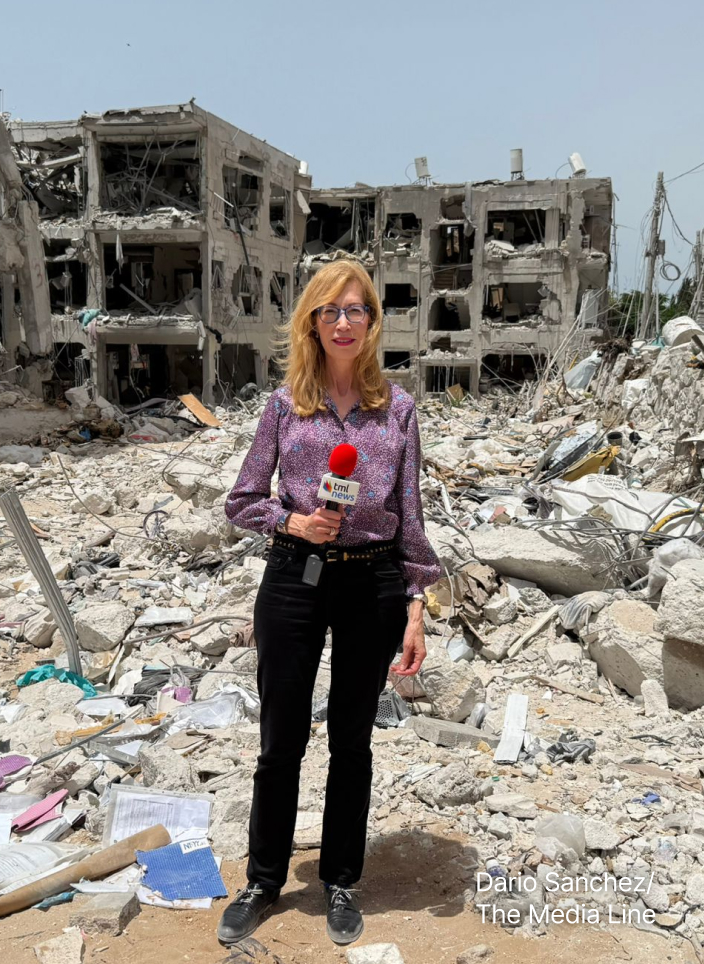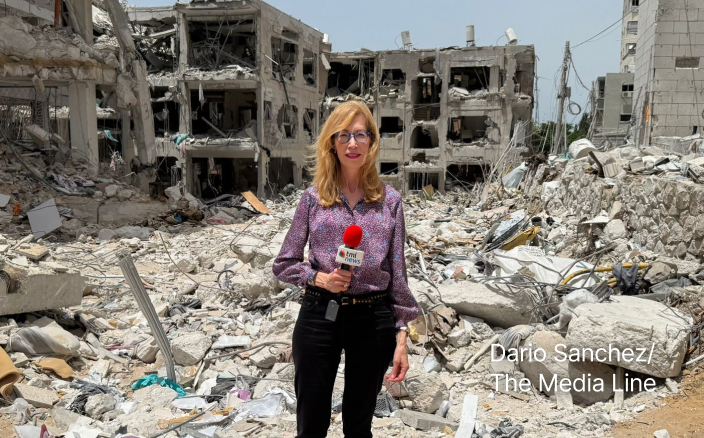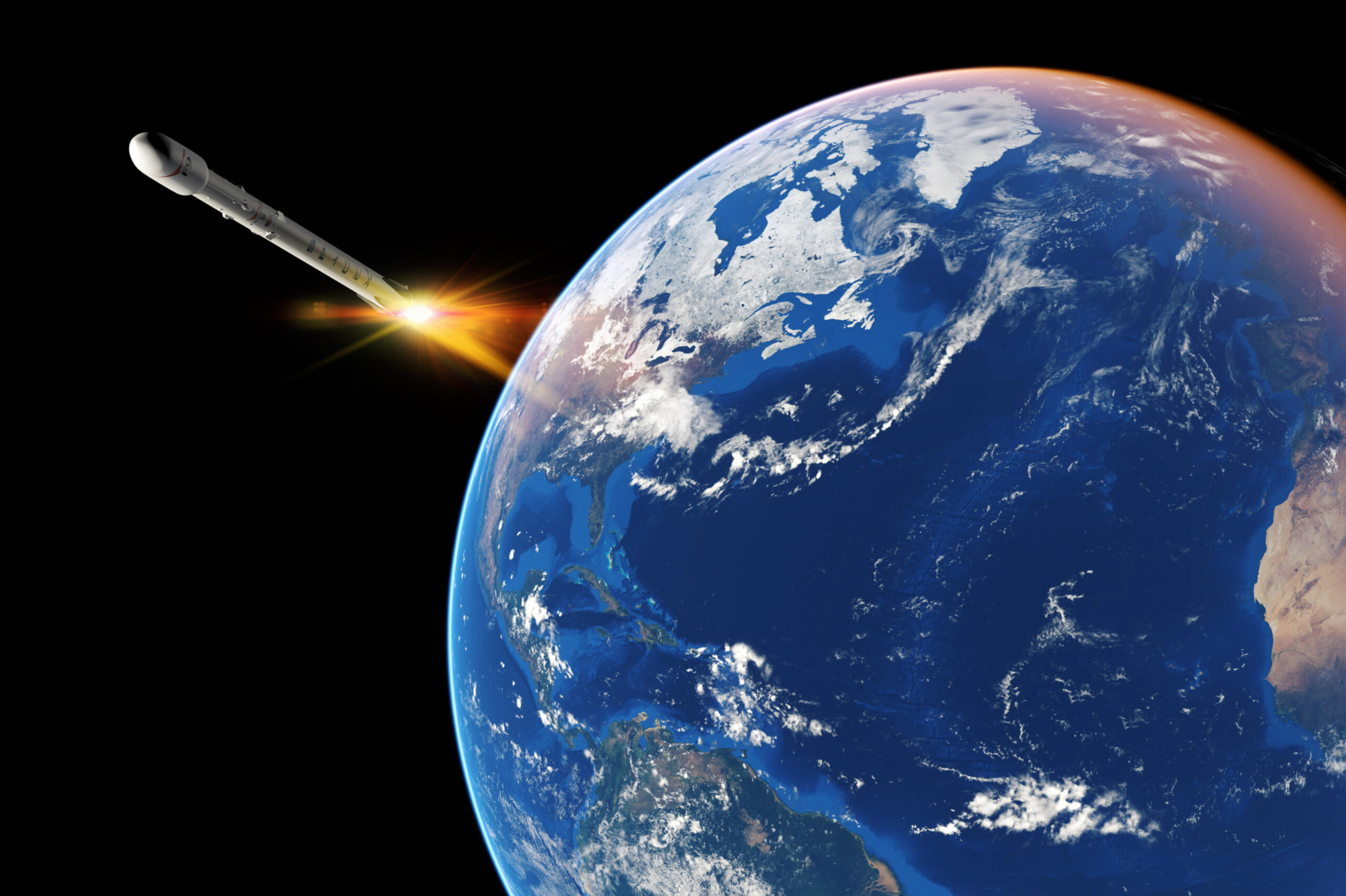Saudi-US Space Mission Highlights International Collaboration
Two American and two Saudi astronauts are set to travel to the International Space Station on a research mission run by a partnership between Saudi and US space agencies with private space companies.
This coming Sunday, Ali Alqarni and Rayyanah Barnawi will be strapped into their seats and launched into space, where they will soon become the first Saudi astronauts on the International Space Station. There, some 250 miles above Earth, they will spend 10 days conducting experiments as mission specialists on Axiom Space’s Axiom Mission 2 (Ax-2).
The Ax-2 mission marks a partnership between the Saudi and US government space agencies with several commercial space companies.
Axiom Space, based in Texas, is a private company that offers infrastructure, expertise, and NASA-level astronaut training for research trips to the ISS. Also based in Texas, Elon Musk’s SpaceX is another commercial company, which is providing the transportation for the mission—a SpaceX Crew Dragon capsule atop a SpaceX Falcon 9 rocket. The launch itself will take place from NASA’s Kennedy Space Center in Florida.
The first Axiom Space mission, Ax-1, launched in April 2022 and was the first mission to the ISS to be crewed entirely by private astronauts. Ax-2 will be the first mission to have a crew made up of a mix of national and commercial astronauts. As well as the two Saudi astronauts, the crew will comprise two Americans: legendary former NASA Chief Astronaut Peggy Whitson and commercial astronaut John Shoffner.
“Private astronaut missions are an important part of NASA’s strategy for enabling a robust commercial market in low Earth orbit [defined as an altitude below 1,200 miles]. The goal is for the agency to become one of many customers seeking low Earth orbit services in the near future,” a NASA spokesperson told The Media Line.
Alqarni and Barnawi will become the kingdom’s first astronauts on the ISS, but its second and third astronauts in space. The first Saudi in space was Prince Sultan bin Salman Al Saud, who in 1985 spent a week in orbit as a payload specialist on NASA’s Space Shuttle Discovery.
Alqarni, 31, is a Saudi Air Force fighter pilot with over 2,387 flight hours accumulated during 12 years of military service. He has a bachelor’s degree in aerospace science from the King Faisal Air Academy.
Give the gift of hope
We practice what we preach:
accurate, fearless journalism. But we can't do it alone.
- On the ground in Gaza, Syria, Israel, Egypt, Pakistan, and more
- Our program trained more than 100 journalists
- Calling out fake news and reporting real facts
- On the ground in Gaza, Syria, Israel, Egypt, Pakistan, and more
- Our program trained more than 100 journalists
- Calling out fake news and reporting real facts
Join us.
Support The Media Line. Save democracy.


Barnawi, 33, who will become the first Saudi woman in space, is a breast cancer researcher with degrees in biomedicine whose lab expertise will be instrumental in conducting experiments.
Backup mission specialists for the pair are Ali Alghamdi, 31, a fighter pilot in the Saudi Air Force, and Mariam Fardous, 38, an epidemiologist and the first Arab woman to deep dive in the Arctic Ocean and at the North Pole.
All four are graduates of the Saudi Space Commission’s first astronaut training program.
Whitson, 63, Axiom Space’s director of human spaceflight, will take the helm as Ax-2’s mission commander. Whitson has spent more time in space than any other American, a total of 665 days, and was the first female commander of the International Space Station.
Shoffner, 64, who will be the Ax-2 mission pilot, is a racecar driver, master skydiver, and accomplished airshow aviator with over 8,500 hours of flight time. He received NASA-level astronaut training from Axiom Space.
The Ax-2 crew are taking 20 experiments into space with them, including a microgravity cloud seeding experiment that was described as “really interesting” by Saudi Space Commission’s Microgravity Research Lead Mishaal Ashemimry.
Cloud seeding is a form of weather modification used to increase rainfall, and involves “seeding” clouds with silver iodide by a plane or flares. The astronauts will study the cloud seeding process by mixing silver iodide crystals with moist air in a reaction chamber, recreating the process used on Earth.
“The first-of-its-kind experiment will help inform how we can create artificial rain for lunar and Martian settlements … [to] potentially produce rain such that we enable agriculture on the moon and Mars,” Ashemimry told reporters during an Axiom Space press conference.
In another example of national space programs working closely with commercial space companies, the cloud seeding experiment is contained in a Nanoracks Nanolab, a cube of scientific gadgets the company calls “plug and play microgravity research modules.”
A spokesperson for Texas-based Nanoracks told The Media Line the company was “working closely” with Saudi Arabia and in particular with Dr. Ashraf Farahat of King Fahd University of Petroleum and Minerals on cloud seeding in microgravity.
“This Nanolab experiment is designed and built by Nanoracks to study some basic principles needed to evaluate the potential to use cloud seeding in low gravity environments,” the spokesperson said.
Nanoracks, which has a long history of supporting Emirati space missions, began its partnership with Saudi Arabia in 2022. It also teamed up with the Saudi Space Commision to create DreamUp DreamKits, a ground-based, sciences-focused kit that is one of several educational engagement activities generated by the Saudi Space Commission for its inaugural flight.
Other Saudi experiments show the kingdom’s commitment to expanding access to space travel. Nebula Research and Development, a Jeddah-based space medicine research company, has developed six experiments for the Ax-2 mission that look at the impact of short space trips on the human body. These experiments will examine blood-based biomarkers and monitor astronauts’ brain waves with an EEG. The research is aimed at opening the door for space tourists with varying fitness levels and medical conditions.
Twenty-four countries thus far, including the United States, Saudi Arabia, Bahrain, the United Arab Emirates, and Israel, are signatories to the Artemis Accords, an agreement drafted by NASA and the US State Department that aims to establish a legal framework for safe and peaceful space exploration.

